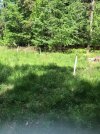Wny Hunter
A good 3 year old buck
ok, here is the back story. I recently had my land logged (2020) . I had the loggers clear cut a 3 acre parcel . They took what was of value to them and left the rest. I’ve hired a couple local guys to come in with an excavator and dozer to clear the land. I’ve instructed them to pop all the stumps and stack everything along the sides . This should be completed by June 1st. I had a soil test done and as expected , the results aren’t good ( I am in zone 5). My long term plan is a no till plot. My questions are more about where to start. I have already purchased 2 tons of Pel lime that I will spread as soon as the clearing work is done ( I cannot get Ag lime delivered). I’ve read buck wheat is a good soil builder. Will I be able to plant that, once the land is cleared, with the PH being so low? If the answer is yes, will I be able to plant the LC mix late summer early fall? Or should I hold off on that till next year , and just continue to build up the soil? I understand this is going to be a long term project , I just want to start off on the right foot.



